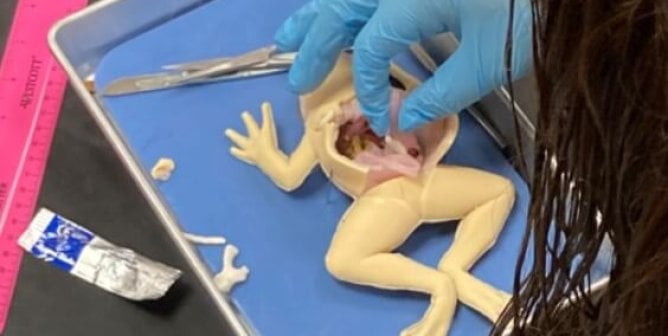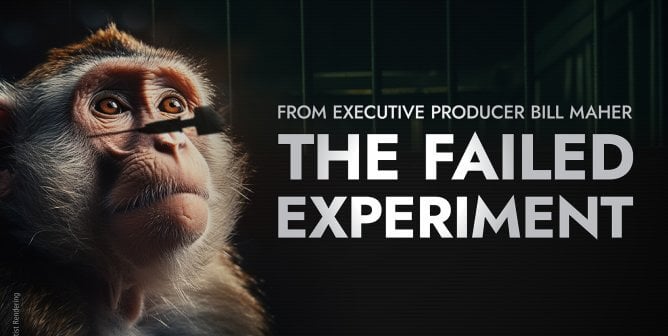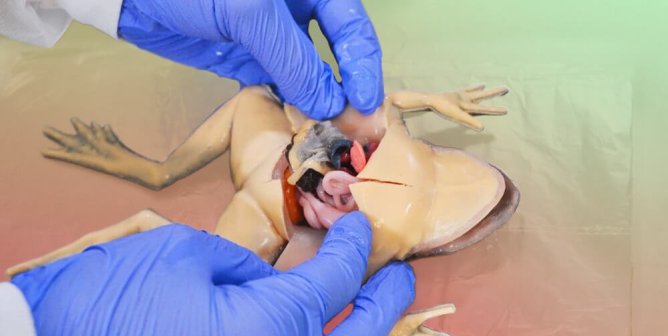Teacher Spotlight: Meet Sam Suiter, TeachKind’s Senior Science Education Specialist
The Teacher Spotlight highlights the work of various humane educators, giving them a chance to share their stories and tips and inspire other compassionate teachers like you to take action for animals through education.
This is a very special Teacher Spotlight, as we’ll be getting to know Samantha Suiter, PETA’s senior science education specialist. She’s also a college biology instructor and one of the core members of the TeachKind staff. As a senior science education specialist, she works directly with educators to replace animal dissection with comprehensive and interactive software programs and has helped TeachKind implement several statewide and district-level dissection-choice policies through software donations to schools around the world.
She also facilitates outreach to hundreds of schools every year with lifesaving information about modern, animal-free teaching tools; writes fantastic science content for the TeachKind website; and more. You can also catch her at educational conferences around the country, where she connects with educators in person, hands out humane-dissection information and TeachKind materials, and hosts professional development trainings, research presentations, and more.
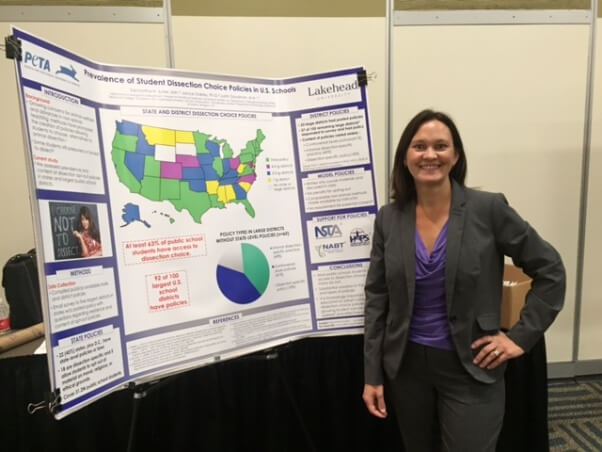
In addition to managing her full-time work at TeachKind, Sam uses her position as a college biology instructor to practice what she preaches and teaches without using animal specimens. She’s a member of the TriBeta National Biological Honor Society, the National Science Teachers Association, the National Association of Biology Teachers, the Association for Science Teacher Education, and the Human Anatomy & Physiology Society.
Sam is a wealth of information when it comes to anything related to humane science, so we’re excited to hear what she has to say about all things dissection and to share her tips for teaching science effectively and ethically.
Tell us what you do at PETA as a senior science education specialist.
I like to think of myself as a problem solver. Animal dissection takes the lives of at least 10 million animals every year, and that’s a problem. The solution? Replacing it with modern, interactive, and creative alternative teaching methods. When I was a high school student, we didn’t have computers (I’m dating myself a bit here), so there was no “digital dissection” to speak of. Teachers were not as eager to listen to students’ ethical concerns, so we either followed along blindly or suffered with a punitive and excruciatingly long research paper. My job is to inform teachers about the benefits of replacing animal dissection. I look forward to the day when it is just a footnote in a history book.

How do you teach college-level biology without doing animal dissection?
Quite easily! When I began teaching college students about 10 years ago, I discussed my ethical concerns about animal dissection with the head of the biology department. Though the course syllabi are departmental, the methods that we use to instruct students aren’t dictated. I’ve easily incorporated software programs into my lecture and lab materials. We cover the same topics, and the students are able to practice identifying anatomical landmarks repeatedly, both in and out of the classroom.
How do your students respond to these alternatives?
Many peer-reviewed studies indicate that students actually prefer using humane teaching tools and that many are turned off by the idea of dissecting an animal. I’ve found the same to be true in my classes. Students’ reactions to digital dissection and physiology software programs have been overwhelmingly positive, and many have specifically sought out my course sections because they know I don’t dissect animals.
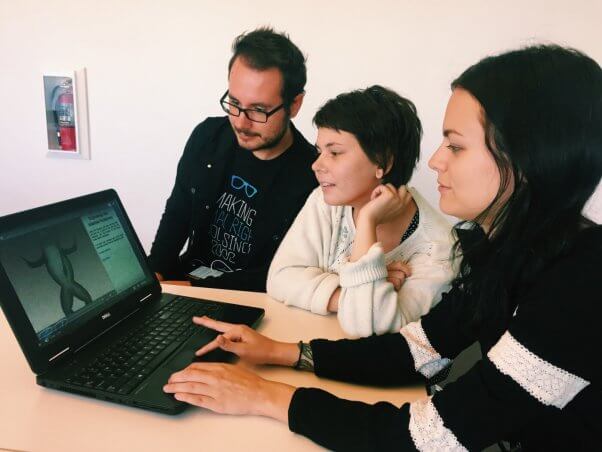
What are the major benefits of replacing animal dissection with humane alternatives?
The three E’s: economic, educational, and ethical. Purchasing software programs is cheaper than repeatedly buying dissection supplies and preserved animals. Students learn and retain the information better using interactive software. Animals’ lives are spared, and students find the inclusive classroom environment more inviting.
What do you think are the best alternatives to dissection for middle or high school teachers?
It really depends on the topic, but there is a plethora of amazing ideas for any course of study and for any species. For example, if the objective is to learn about the human body, organ systems, and organs, a program like Practice Anatomy Lab will be a good fit. If the course is a survey of the animal kingdom, a multispecies program like Froguts will be best. And for advanced high school courses, Cogent Education has case studies and simulations for a variety of physiological processes. No matter the subject area, teachers can and should find ways to teach without using animals.
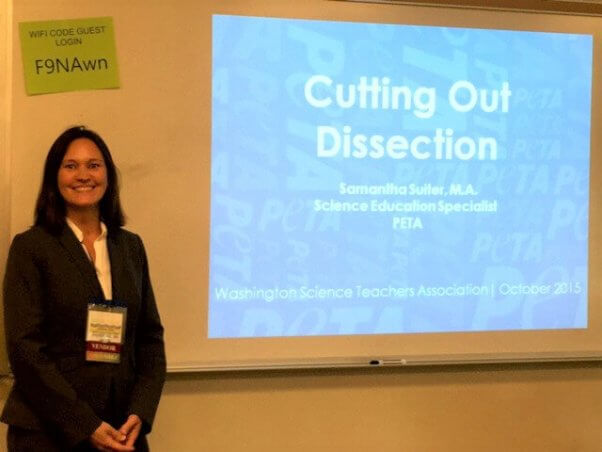
What makes you so passionate about this issue?
My inspiration is twofold. First, I stopped eating animals as a young teenager, but as a biology student, I was not brave enough to speak up for those killed for classroom dissection. My voice is much louder now. I think that many people who seek a career in animal protection feel an obligation to share what they have learned through personal experiences, and I try to practice this daily. Second, animal dissection is a useless practice that hasn’t changed in over a century. Imagine if we were still using other technology from a century ago—it would feel like the Dark Ages. It’s absurd that this is still occurring in modern schools when there is such an easy fix. The misguided notion that one must cut apart animals in order to learn about them cannot be justified, and it’s time to move forward with humane science education.
Any advice for teachers who think that they’re ready to ditch dissection in their school or classroom?
I’d ask, “What are you waiting for?” Teachers have an enormous amount of freedom in choosing classroom activities, so there’s no better time than now to embrace life-affirming practices. Modern science curricula don’t require or even mention dissection (think the NGSS and the International Baccalaureate, among others), and medical students don’t dissect animals. The once ubiquitous and readily accepted practice is becoming obsolete, so don’t get left behind. TeachKind.org/Dissection is a great place to begin the journey—it has information on several software programs and tips on getting started. I’d also urge teachers to remember why they became educators and to stay inspired, knowing that they’re shaping the compassionate leaders of tomorrow.
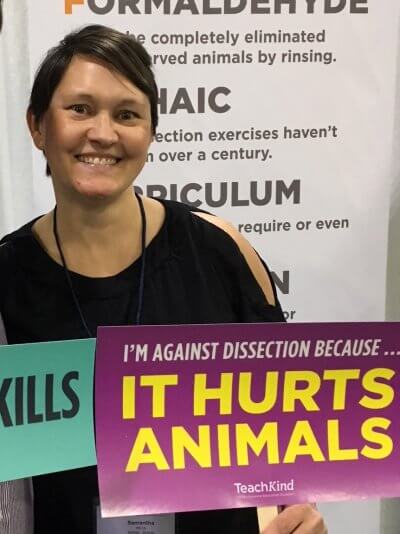
*****

